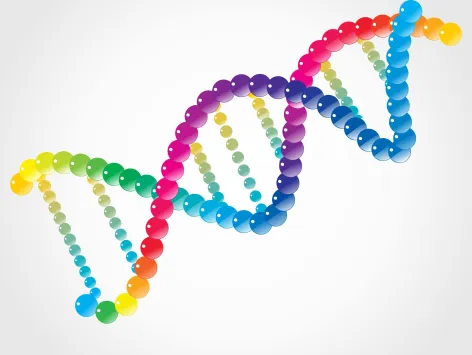1. Electric Charge
Charge is an inherent characteristic of matter that gives rise to the generation and perception of electrical and magnetic phenomena. All physical entities are composed of atoms, which possess an equal quantity of positive and negative charges in the form of protons and electrons, respectively. An atom is considered electrically neutral when the quantity of electrons is equivalent to the quantity of protons. When electrons are extracted from an object, it acquires a positive charge. When electrons are transferred to an object, it acquires a negative charge. In accordance with Coulomb’s law, charges that possess the same sign exhibit a repulsive force towards each other, while charges with opposite signs manifest an attractive force.
- Methods of Electrically Charging an Object
- The phenomenon of charging an object through the process of friction. When two objects are brought into contact and subjected to friction, an exchange of electrons occurs, resulting in the transfer of electrons from one object to the other. When electrons are transported from a body, it results in an accumulation of positive charge on the body, leading to a positive charge. The entity that acquires the electrons experiences a negative charge. The magnitudes of the positive and negative charges generated during rubbing are consistently equal. When a glass rod is subjected to friction with silk, it undergoes a process of electron transfer, resulting in the loss of electrons and the acquisition of a positive charge. Simultaneously, the silk material gains an equivalent amount of negative charges. When an ebonite rod is subjected to friction with wool or fur, it undergoes a process of charge transfer resulting in the acquisition of a negative charge. The wool or fur becomes positively charged to an equal extent.
- The phenomenon of charging by electrostatic induction. When a positively charged rod is brought in proximity to an insulated conductor, the electrons, which carry negative charges, within the conductor will experience an attractive force towards the rod. Consequently, an accumulation of negative charge will occur at the terminal of the conductor in close proximity to the rod, whereas an accumulation of positive charge will be present at the opposite terminal. This phenomenon is commonly referred to as “electrostatic induction.” The charges that are thus generated are observed to possess similar magnitudes but opposite polarities. When the far end of the object is touched by a conductor that is connected to the Earth, the positive charges present in this region will be neutralised by the influx of negative charges originating from the Earth via the conducting wire. If the wire is removed prior reaching the rod, the negative charges that were previously localised at the outside end will disperse across the entire conductor. This implies that the conductor has acquired a negative charge through the process of induction. Similarly, the introduction of a negatively charged rod in close proximity to a conductor might result in the induction of a positive charge on said conductor.


There are several significant aspects to consider while discussing electrostatic induction. The process of inducing an object does not result in the acquisition or loss of electric charges by the body. The polarity of induced charge is consistently opposite to that of the generating charge. The magnitude of the induced charge is either less than or equal to the magnitude of the inducing charge, but it is never larger. The process of induction occurs only throughout bodies, regardless of whether they are conductive or non-conductive, rather than within individual particles.
- The process of charging through conduction. Let us examine two conductors, one with an electric charge and the other devoid of any electric charge. The conductors are brought into contact with one another. The charge, regardless of its polarity, will disperse across both conductors due to the repulsive forces acting against it. Consequently, the conductors will acquire a charge of identical polarity ‘Charging via conduction (through touch)’ is the term used to describe this.
- The Concept of Electric Charge
In the International System of Units (SI), current is considered a fundamental quantity, while charge is regarded as a derived physical quantity. Charge has dimensions of [AT] and is measured in units of ampere multiplied by second, sometimes referred to as the ‘coulomb (C)’.The coulomb can be mathematically linked to the CGS units of charge by use of a fundamental relationship. One coulomb is equivalent to three times ten to the power of nine electrostatic units (esu) of charge, which is also equal to the electromagnetic unit (emu) of charge.
- The Characteristics of Electric Charge
The presence of charge is consistently linked to the presence of mass. The presence of mass is a necessary condition for the existence of charge, but charge can exist independently of mass. The concept of charge is quantized. When a physical quantity is restricted to discrete values rather than continuous values, it is referred to as being quantized. Multiple investigations have been conducted to ascertain that the fundamental unit of charge in nature is the charge carried by an electron. In the context of elections, the elementary unit of charge is represented by e, which has a value of 1.6 x 10^-19C. Consequently, the charge on any object may be expressed as an integer multiple of e, denoted as q = ± ne, where n is a positive integer. (1) The charge on a body cannot be fractional, such as (17.2) e or (10^-5) e, as it is always quantized. The principle of charge conservation is upheld. Numerous experimental findings consistently demonstrate that within an enclosed system, the overall charge remains constant over time, notwithstanding the possibility of alterations in individual charges. This implies that the creation or annihilation of charge is not feasible. The aforementioned concept is commonly referred to as the principle of conservation of charge. The concept of charge remains unchanged under different conditions. This implies that the value of charge remains unaffected by the choice of frame of reference, indicating that the charge on an object remains constant regardless of its velocity.
- Conductors and Insulators: An Academic Perspective
Conductors are substances that facilitate the flow of electric charge by virtue of the availability of mobile electrons. For instance, metals exhibit high electrical conductivity. Insulators are substances that impede the flow of electric charge due to the absence of free electrons inside their structure. For instance, materials such as wood, polymers, and glass, among others.




